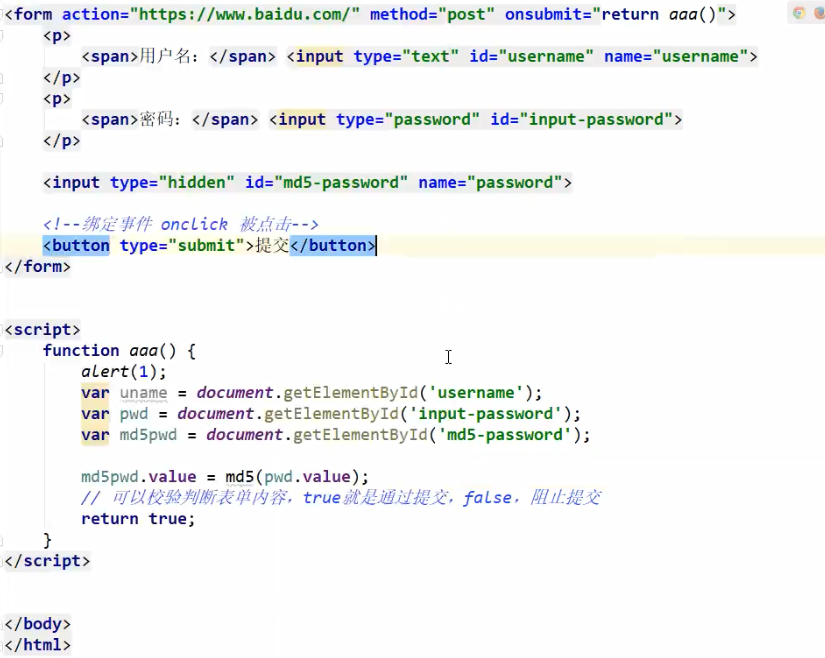1. Function
1.1. Define function
Absolute value function
Definition method 1:
function abs(x){
if(x>=0)
return x;
else
return -x;
}
If there is no return, the function execution will also return the result (undefined)
Definition method 2:
var abs = function(x){
if(x>=0)
return x;
else
return -x;
}
function(x) {...} is an anonymous function, but the result can be assigned to abs, and the function can be called through abs
Call function:
abs(10) //10 abs(-10) //10
Parameter problem: JavaScript can pass any number of parameters or no parameters
arguments //Represents all parameters passed in. It is an array
var abs = function(x){
console.log("x=>"+x);
for(var i = 0;i < arguments.length;i++){
console.log(arguments[i]);
}
if(x>=0)
return x;
else
return -x;
}
Problem: arguments contains all parameters. If you want to use extra parameters for additional operations, you need to exclude the existing parameters
**rest: * * a new feature introduced by ES6 to obtain all parameters except those already defined
function aaa(a,b,...rest){
console.log("a=>"+a);
console.log("b=>"+b);
console.log(rest);
}
The rest parameter can only be written at the end and must be identified with
1.2. Scope of variable
The variables defined by var have scope, and the declared variables in the function are local variables
It is assumed that the internal function variable and the external function variable have the same name
function dd(){
var x = 1;
function dd2{
var x = 'A';
console.log('inner' + x);
}
console.log('outer' + x);
dd2();
}
dd();
Function search variables start from itself and search from inside to outside. Assuming that there are function variables with the same name outside, the internal function will shield the variables of the external function
Promote the scope of the variable
function dd(){
var x = "x" + y;
console.log(x);
var y = 'y';
}
Result: x undefined
Because the js execution engine automatically promotes the declaration of Y, but does not promote the assignment of variable y
Global function
Global object window
var x = 'xxx';alert(x);alert(window.x);//By default, all global variables are bound under the window object
The alert() function itself is also a window object
standard
Since all global variables are bound to the window, if different js files use the same global variables, there will be conflicts. How to reduce conflicts?
//Unique global variable var duan = {}// Define global variable Duan name = 'duanyuqi'; duan. add = function(a,b){ return a + b;}
Put all your code into the unique space name defined by yourself to reduce the problem of global naming conflict
Local scope let
ES6 let (block level scope) keyword to solve the problem of local scope conflict
Constant const
Modified constants are read-only and cannot be modified
1.3. method
Definition method
Method is to put the function in the object. The object has only two things: attributes and methods
var duan = { name:'duanyuqi', birth:1999, age:function(){ var now = new date.get().getFullYear(); return now - this.birth; }}duan.name;duan.age();
apply
You can control the direction of this in js
function getAge(){ var now = new date.get().getFullYear(); return now - this.birth;}var duan = { name:'duanyuqi', birth:1999, age:getAge()};getAge.apply(duan,[]);//this points to duan, and the parameter is null
2. Internal objects
Standard object
typeof 123"number"typeof '123'"string"typeof []"object"typeof {}"object"
2.1.Date
Basic use
var now = new Date();now.getFullYear();now.getMonth();now.getDate();now.getDay();now.getHours();now.getMinutes();now.getSeconds();now.getTime();//Timestamp console log(new Date(1578106175991));// Convert timestamp to time
2.2.Json
Conversion of Json string and Js object
var user = { name:"duanyuqi", age:22, sex:'male'}//Object - > JSON string var jsonuser = JSON stringify(user);// JSON string - > object var obj = JSON Parse ('"name": "duanyuqi", "age": 22, "sex": "male");
Differences between JSON and JS objects
var obj = {a:'hello',b:'hellob'};var json = '{"a":"hello","b":"hellob"}'
2.3.Ajax
Native js writing xhr asynchronous request
jQuery encapsulated method $("name") ajax("")
axios request
3. Object oriented programming
class inheritance
class keyword, ES6 import
class Student{ constructor(name){ this.name = name; } hello(){ alert('hello'); }}var xiaoming = new Student("xiaoming");var xiaohong = new Student("xiaohong");xiaoming.hello();
4. Operate BOM object
BOM: Browser Object Models
window
Window stands for browser window
Navigator
Encapsulates the information of the browser
navigator.appName"Netscape"navigator.appVersion"5.0 (Windows NT 10.0; Win64; x64) AppleWebKit/537.36 (KHTML, like Gecko) Chrome/91.0.4472.164 Safari/537.36"navigator.userAgent"Mozilla/5.0 (Windows NT 10.0; Win64; x64) AppleWebKit/537.36 (KHTML, like Gecko) Chrome/91.0.4472.164 Safari/537.36"navigator.platform"Win32"
The navigator object is not used most of the time and will be modified artificially
screen
screen.width1920screen.height1080
location (important)
location represents the url information of the current page
host: "www.baidu.com"href: "https://www.baidu. COM / "protocol:" HTTPS: "reload: ƒ reload() / / refresh the web page replace: ƒ replace()location.assign('http://wormhole-dev.hsmob.com/#/groupManage/userGroup '/ / jump to a new address
document
Document represents the current page, HTML DOM document tree
document.title"Baidu once, you know"document.title = 'Prison oriented programming'"Prison oriented programming"
Get web cookie
document.cookie"BIDUPSID=A8193CF1CC6EABCC735EA8CCE768BFD9; PSTM=1619007674; BAIDUID=A8193CF1CC6EABCC4371C39116C66094:FG=1; MCITY=-%3A; BD_UPN=12314753; BAIDUID_BFESS=A8193CF1CC6EABCC4371C39116C66094:FG=1; Hm_lvt_aec699bb6442ba076c8981c6dc490771=1625812690,1626420375,1626425693,1626837085; COOKIE_SESSION=95285_4_7_8_6_18_0_1_6_8_1_0_161530_161434_0_0_1626837189_1626837086_1626932518%7C9%23161393_52_1626837042%7C9; BDORZ=B490B5EBF6F3CD402E515D22BCDA1598; BD_HOME=1; H_PS_PSSID=34303_33764_34272_31254_34004_34073_34092_34094_26350_34237; BA_HECTOR=21a1ah2480242g25if1gfkq2k0q"
Principle of hijacking cookie s
www.taobao.com
<script src="a.js"></script><!--a.js Contains document.cookie,Gets the name of the visitor cookie-->
The server can set a cookie: httpOnly
History (not recommended)
Browser history
history.back()histoey.forward()
5. Manipulate DOM objects
DOM: Document Object Model
core
A web browser is a DOM tree structure
Update: updating DOM nodes
Traversing DOM nodes: get DOM nodes
Delete: deletes a DOM node
Add: add an experience DOM node
To operate a DOM node, you must first obtain the DOM node
Get DOM node
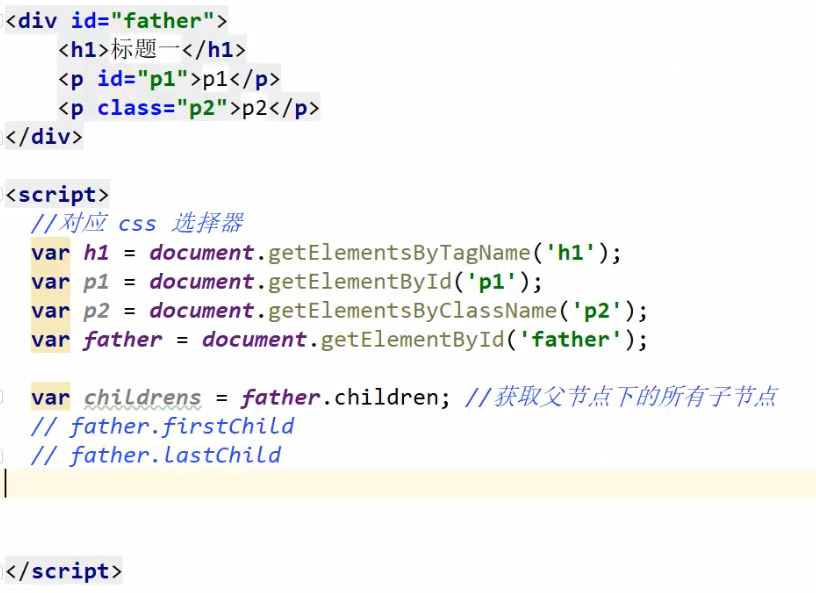
Update node

Operation text
id1.innerText='456' Modify the value of the text id1.innerHTML='<strong>123</strong>' analysis HTML Text label
Operation CSS
id1.style.color = 'yellow';id1.style.fontsize = '20px';id1.style.padding = '2em';
Delete node
Step: first obtain the parent node, and then delete yourself through the parent node
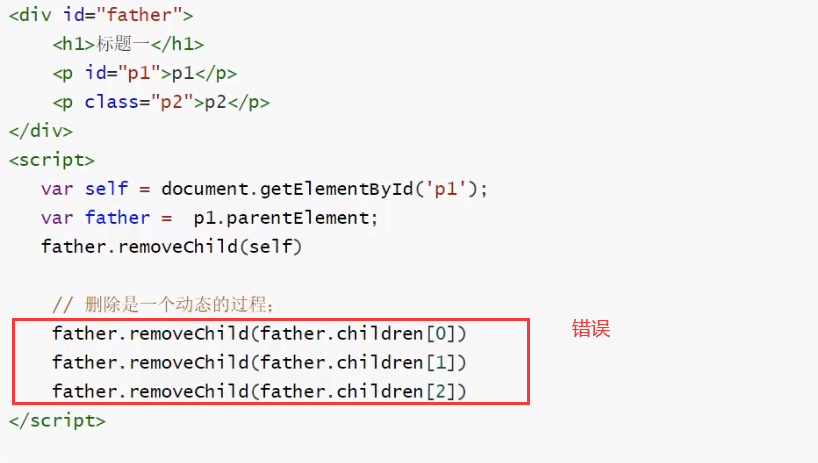
Note: when deleting multiple nodes, children change from time to time
Insert node
When a DOM node is obtained, assuming that the node is empty, an element can be added through innerHTML. If there is an element on the node itself, it will be overwritten
Add

effect:
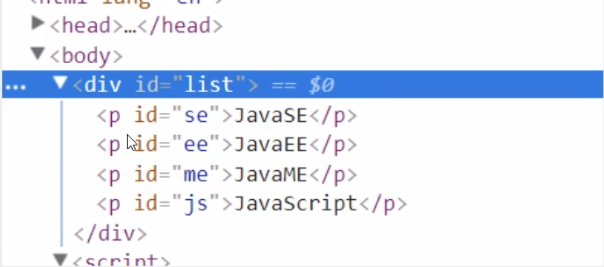
Create a new label to insert
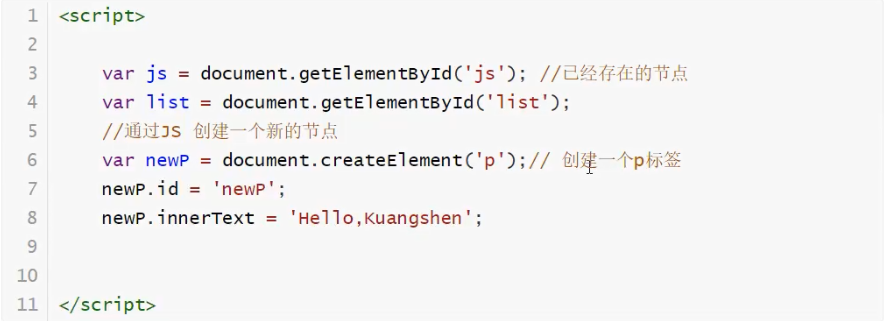
6. Operation form (verification)
What is a form DOM tree
Text box text
Drop down box
radio box
Multi check box
Hide domain hidden
Password box password
Purpose of the form: to submit information
Get information to submit
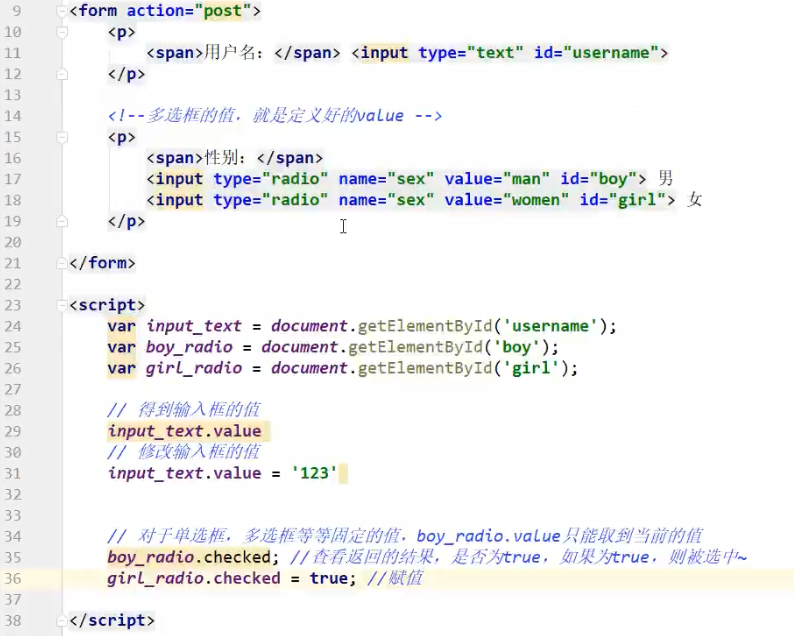
Submit form (MD5 encryption, form optimization)


